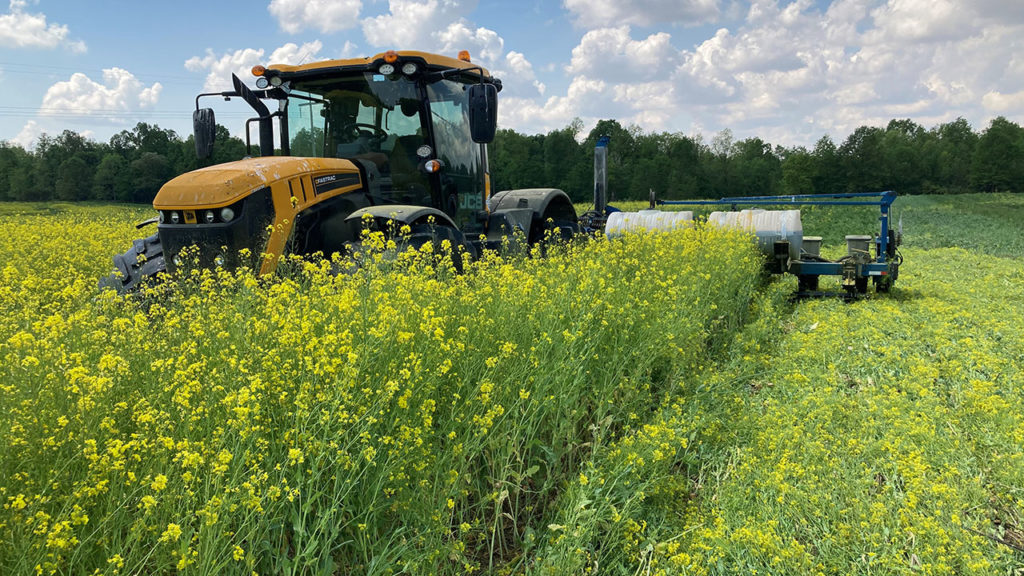Last Updated on January 27, 2025
The idea of achieving carbon neutrality—especially, as a company food industry company reliant on a massive supply chain, farming, and ranching—is something we’ve investigated for a while here at ButcherBox. We’ve shared some of what we’ve learned about the complexities—as well as some of the marketing green-washing—that can occur when companies seek to account for their carbon footprint. (You can read our thoughts on carbon neutrality here.)
At this time, we have concluded that pursuing a carbon-neutral claim for the company isn’t the best way to achieve the level of environmental responsibility we seek. While we are still very much interested in one day achieving carbon neutrality, our current focus is on identifying the areas in which we can make a meaningful, positive impact on the environment through measuring and reducing our carbon footprint and purchasing reliable offsets.
Here are the details on how we’ve done that so far.
Measured Our Carbon Emissions
Because of the complexity of our supply chain, some carbon emissions calculations are easier to measure and account for than others. We decided to start with what we could measure with accuracy: shipping and transportation emissions. We worked with a third-party consulting firm that reviewed our data and made calculations based on the Kyoto Protocol.
The data they analyzed included the journey of a ButcherBox product from the farm/ranch/boat to the processing facility to our fulfillment centers to our members’ doors. With that data, we were able to identify the following areas in which we could take action.
Identified Opportunities to Reduce Carbon Emissions
In analyzing the data, we identified three opportunities to reduce carbon emissions in our reshipments, the operations of the carriers we use, and air shipments.
1. Reshipment Rate
Reshipments happen when a member receives a damaged box or one with thawing issues. When this occurs, we replace our member’s order, resulting in double the GHG emissions per order. Reshipments are neither good for our members, nor the environment. Therefore, we work hard to reduce reshipments.
Recent successes include:
- Reducing the reshipment rate by more than half from 2019 to 2020
- Maintaining our 2020 reship rate of 2% in 2021 despite nationwide labor and trucking shortages.
2. Renewable Energy Vehicles and Sustainable Energy Solutions
Since we rely on partners to deliver orders, we also evaluated their commitments to reducing their environmental impact. This meant examining our suppliers’ and carriers’ approaches and plans to reduce carbon and providing feedback when necessary.
We discovered that some of our supply chain partners are currently making investments to add electric vehicles to their fleets, as well as alternative fuels and bike-fueled transportation. We anticipate that these changes will lead to a more sustainable future in shipping and transportation and further reduce the carbon footprint of our supply chain.
3. Shipments by Air
We use air shipments for members who live in hard-to-reach areas of the country such as North Dakota. They account for less than 1% of our orders. Yet, the GHG (greenhouse gas) emissions from these deliveries represent 10% of our delivery carbon emissions.
In 2021, our logistics team was tasked with identifying if we could eliminate air shipments altogether. Their analysis and action enabled ButcherBox to reduce air shipments by moving to ground transport and limiting the number of touchpoints on the journey. Unfortunately, this strategy could not be replicated for our North Dakota customers where the speed of air travel is still needed to successfully deliver ButcherBox to those members.
While we were not able to move completely away from air shipments, we are proud to report that our average carbon emissions per ButcherBox order in 2021 compared to 2020 were reduced by 3.34%!
The ButcherBox operations team is determined to seek new ways to optimize our logistics system and innovate in shipping our products to reduce carbon emissions.
Purchased Agricultural Carbon Credits

From our analysis, eliminating shipping emissions in the short term would be impossible. This is largely because the shift to renewable energy vehicles is expected to occur over a 10 to 20-year period. So, we sought out a better solution for the short term.
One step we took was to purchase verified carbon credits that have been created through agriculture practices that increase soil health.
Why Agricultural Carbon Credits?
Farming practices such as cover-cropping, no-till, and extended crop rotations can help enhance soil quality and sequester carbon. Through soil sampling, sensory technology, and data models, farmers can estimate the amount of carbon their farm has sequestered and sell this credit in the voluntary carbon marketplace. Purchasing agriculture carbon credits helps us further our company’s commitment to supporting farmers and soil health.
We went through a vigorous vetting process to identify reliable agriculture carbon credits, examining 10 organizations based on their commitment to permanent, third-party verification, and robust methods for measuring carbon. (You can learn more about the principles for reliable offsets in this post.)
Ultimately, we decided to buy carbon credits from Carbon by Indigo and Truterra. We are proud to share our commitment to offset the carbon emissions generated by all ButcherBox shipments.
What about Livestock?
You may be wondering how the carbon footprint of livestock has been incorporated into our approach. Livestock is our largest source of scope 3 emissions (learn more about “scope 3” in this past post). It’s also a complex area to measure as you can’t simply tally the number of methane emitting cow burps.
There are many unknowns and no agreed-upon standards to measure the negative ways livestock impacts the environment. In addition, livestock contributes to a chain of beneficial outcomes as well. For example, on rangelands, livestock can help improve biodiversity as well as soil health and quality. Some studies have shown that these systems may also contribute to soil carbon sequestration.
Overall, more research to determine the actual emissions of livestock is needed and we are excited to financially support a multi-year research study led by Noble Research on the soil carbon sequestration potential of pasture-based livestock across many different soil types.
So, What Does This All Mean for ButcherBox?
Focusing solely on carbon will not get us all the environmentally sustainable future we need.
While measuring and managing our carbon emissions will be part of our work, we also believe we can play a larger role in furthering progress towards a healthier planet through better soil health, biodiversity, and clean waterways.
We are excited to be able to contribute indirectly to these outcomes through our carbon offset purchases and research support, and directly through our commitment to continually improve the impact of our supply chain.
This is the final post of a series on ButcherBox’s approach to carbon emissions and the environment. Click here to see all the articles we’ve published in the series, “Understanding Our Carbon Footprint” or go to the specific post by clicking the links below.




